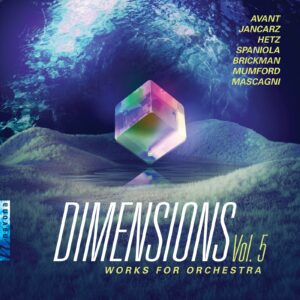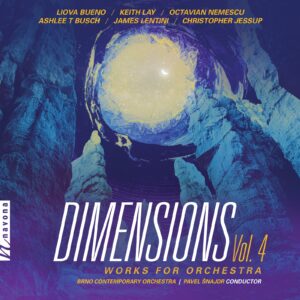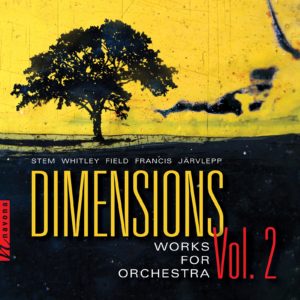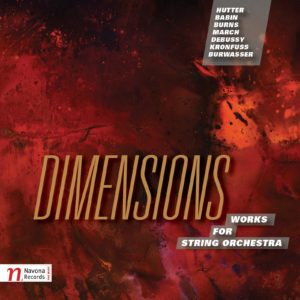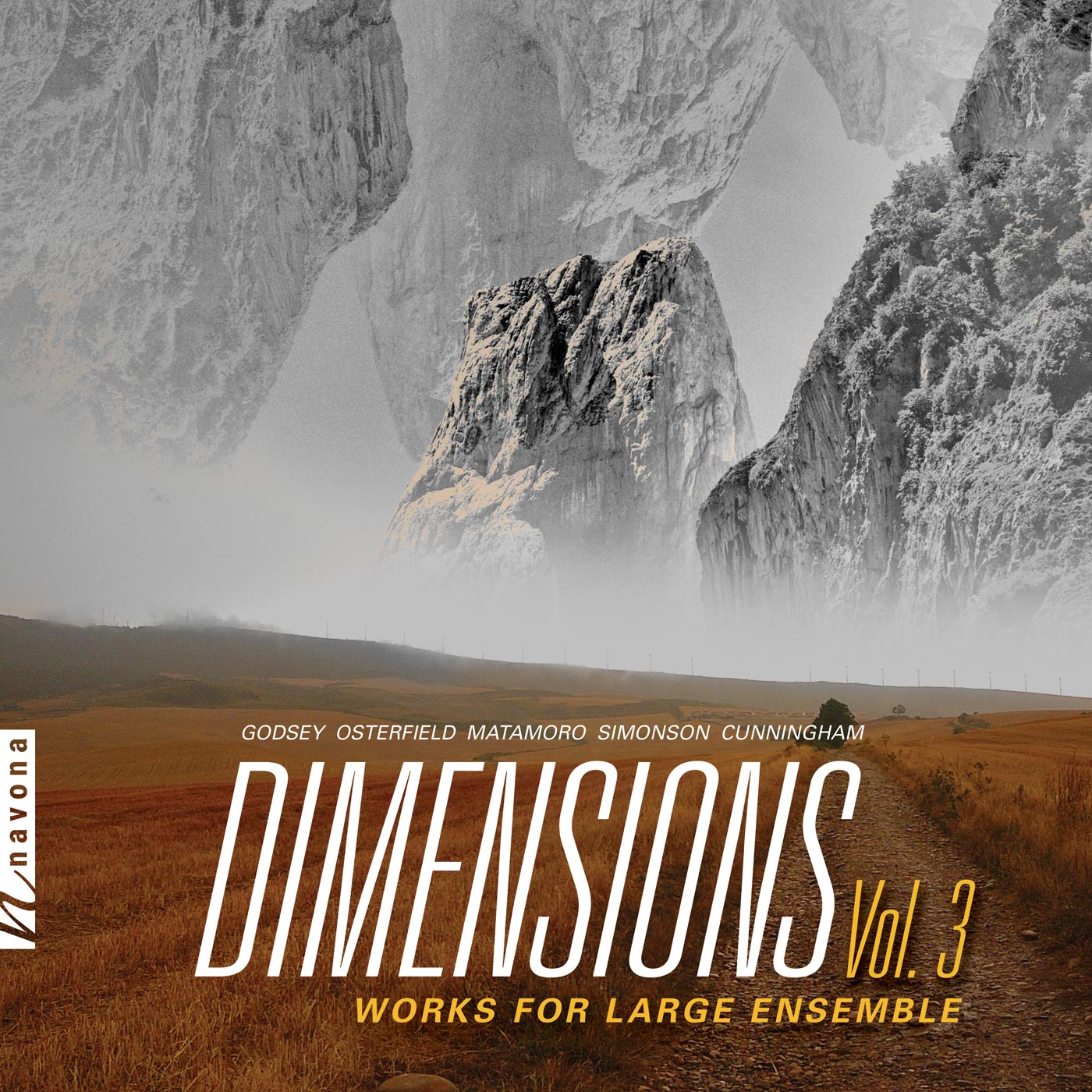
Share Album:
Dimensions Vol. 3
Andre’ E. Godsey, Sr. composer
Paul Osterfield composer
Miguel Matamoro composer
Eric Simonson composer
Michael G. Cunningham composer
The third installment in Navona Records’ series for orchestra is here: DIMENSIONS VOL 3, featuring the work of contemporary composers Michael G. Cunningham, Andre’ Godsey, Miguel Matamoro, Paul Osterfield, and Eric Simonson. Harnessing the power of a concert hall full of virtuosos performing original compositions from today’s composers, DIMENSIONS VOL 3 packs a powerful punch.
The compilation kicks off with the work of Dr. Andre’ E. Godsey, Sr. The first movement of his Symphony Number One in C# Minor: Themes for Søren Kierkegaard is a sweeping programmatic piece imagining the life of the legendary Danish philosopher and polymath. This movement deals with Kierkegaard’s heartbreak following the cutting off of his wedding engagement to the love of his life. Paul Osterfield’s Silver Fantasy follows, a concertante wind ensemble piece featuring graceful lyrical passages and vibrant rhythmic energy. In Brétema, named after the Galician word referring to dense fog and clouds, composer Miguel Matamoro draws parallels between the Spanish cliffs that perpetually emerge and retreat among the smoky mist and the prism-like fluidity of his own musical idiom.
Eric Simonson contributes Maples and Rondeaux avec Berlioz from his TWO PICTURES FOR ORCHESTRA. Both are based on musical “snapshots” of pieces from Beethoven and Berlioz, respectively. These quotations, taken from less well-known passages, provide the basis for Simonson’s compositions, which reconsider their fragmented primary sources in a new light. Michael G. Cunningham’s Symphony No. 7 and Impromptus—featuring all the sophistication and nuance listeners have come to expect from him over the years—round out the album.
The breadth of talent and compositional styles present on DIMENSIONS VOL 3 makes this album something truly remarkable. Each of these five composers brings his unique approach, distinctive palette of influences, and fine-tuned sensitivities to the table. The result is a compilation album that offers not only this impressive breadth but a sense of depth usually reserved for single-composer albums.
Listen
Stream/Buy
Choose your platform
Track Listing & Credits
| # | Title | Composer | Performer | |
|---|---|---|---|---|
| 01 | Symphony No. 1 in C-Sharp Minor: I. Themes for Søren Kierkegaard | Andre’ E. Godsey, Sr. | Janáček Philharmonic Orchestra | Jiří Petrdlík, conductor | 6:22 |
| 02 | Silver Fantasy | Paul Osterfield | Lindsey Goodman, flute | Moravian Philharmonia Wind & Percussion Ensemble | Petr Vronský, conductor | 8:02 |
| 03 | Brétema | Miguel Matamoro | Janáček Philharmonic Orchestra | Jiří Petrdlík, conductor | 6:01 |
| 04 | 2 Pictures: No. 1, Maples | Eric Simonson | Janáček Philharmonic Orchestra | Stanislav Vavřínek, conductor | 4:07 |
| 05 | 2 Pictures: No. 2, Rondeaux avec Berlioz | Eric Simonson | Janáček Philharmonic Orchestra | Stanislav Vavřínek, conductor | 7:49 |
| 06 | Symphony No. 7: I. Wind | Michael G. Cunningham | Moravian Philharmonic Orchestra | Pavel Šnajdr, conductor | 3:30 |
| 07 | Symphony No. 7: I. Fire | Michael G. Cunningham | Moravian Philharmonic Orchestra | Pavel Šnajdr, conductor | 2:15 |
| 08 | Symphony No. 7: I. Rain | Michael G. Cunningham | Moravian Philharmonic Orchestra | Pavel Šnajdr, conductor | 2:29 |
| 09 | Symphony No. 7: I. Earth | Michael G. Cunningham | Moravian Philharmonic Orchestra | Pavel Šnajdr, conductor | 1:58 |
| 10 | Impromptus, Op. 149c | Michael G. Cunningham | Moravian Philharmonic Orchestra | Pavel Šnajdr, conductor | 6:35 |
SYMPHONY NO. 1 IN C# MINOR
Recorded February 13, 2020 at Dům Kultury města Ostravy (The Ostrava House of Culture) in Ostrava, Czech Republic
Session Producer Jan Košulič
Session Engineer Aleš Dvořák
Assistant Engineer Jana Jelínková
SILVER FANTASY
Recorded March 7, 2017 at Reduta Hall in Olomouc, Czech Republic
Session Producer Vít Mužík
Session Engineers Aleš Dvořák, Jan Košulič
Flute recorded April 24, 2017 at Futura Productions in Roslindale MA
Session Producer & Engineer John Weston
Assistant Engineer Alec Seymour
BRÉTEMA
Recorded Septembr 3, 2019 at Dům Kultury města Ostravy (The Ostrava House of Culture) in Ostrava, Czech Republic
Session Producer Jan Košulič
Session Engineer Aleš Dvořák
Assistant Engineer Maroš Hlatký
TWO PICTURES
Recorded October 14-15, 2019 at Dům Kultury města Ostravy (The Ostrava House of Culture) in Ostrava, Czech Republic
Session Producer Jan Košulič
Session Engineer Aleš Dvořák
Assistant Engineer Maroš Hlatký
SYMPHONY NO. 7 & IMPROMPTUS
Recorded Septmeber 19, 2019 at Reduta Hall in Olomouc, Czech Republic
Session Producer Vít Mužík
Session Engineer Jan Košulič
Assistant Engineer Maroš Hlatký
Executive Producer Bob Lord
Executive A&R Sam Renshaw
A&R Director Brandon MacNeil
A&R Danielle Lewis, Chris Robinson, Jacob Smith
VP, Audio Production Jeff LeRoy
Recording Sessions Director Levi Brown
Audio Director, Editing & Mixing (tracks 1 – 3) Lucas Paquette
International Recording Sessions Manager, Editing & Mixing (tracks 1, 4, 5) Jan Košulič
Editing & Mixing (tracks 6-10), Mastering Shaun Michaud
VP, Design & Marketing Brett Picknell
Art Director Ryan Harrison
Design Edward A. Fleming
Publicity Patrick Niland, Sara Warner
Artist Information
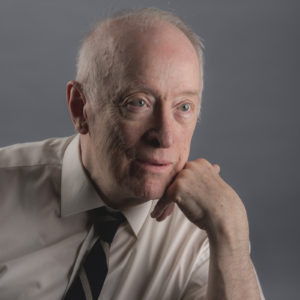
Michael G. Cunningham
A great artist can manifest answers to otherwise perplexing aspects of our world through their craft and help us find understanding. Composer, author, and long-time PARMA artist Michael G. Cunningham (1937-2022) was the embodiment of this truth, a prolific artist whose timeless body of work will resonate for years to come. From symphonies and other orchestral works to piano pieces, art songs, opera, choral compositions, and works for jazz ensembles spanning 11 Navona Records releases, Cunningham showed an unwavering dedication to sharing his music with the world. Upon receiving his doctorate from Indiana University, Cunningham embarked on an artistic journey that would lead him to write over 250 musical compositions spanning multiple genres, pedagogical music books, and more.
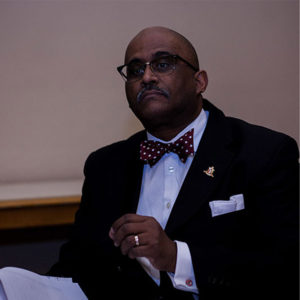
Andre’ E. Godsey, Sr.
Dr. Andre’ E. Godsey, Sr., Ph.D. has found his voice in the contemporary classical music venue. Over the last 15 years, he reveals an ability to inspire and entertain audiences nationally and internationally. At Lake Clifton Senior High school in Baltimore MD, he was awarded the Musician of the Year for 1979. In more recent times, several musical events include the world premiere of Symphony Number One in C# Minor: Themes for Soren Kierkegaard, “Movement One,” at the Sao Paulo Contemporary Classical Music Festival, in Sao Paulo, Brazil, 2019. The same work was recorded by Navona Records and featured on DIMENSIONS VOL 3, which received a Silver Medal in the December 2020 Global Music Awards.
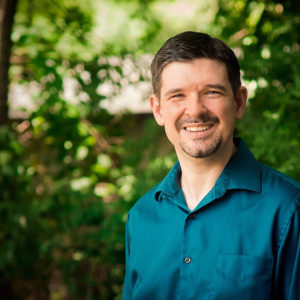
Paul Osterfield
Composer Paul Osterfield was born in Nashville TN in 1973. Spending his formative years in Northeast Ohio, he composed and performed as a cellist throughout middle school and high school, in addition to studying violin, piano, and conducting. His early efforts as a composer were recognized in 1990, when the United States Copyright Office and the Library of Congress awarded Osterfield first prize in their Young Creators’ Contest. The following year, that winning work was performed by the Cleveland Orchestra on their Family Key Concert Series.
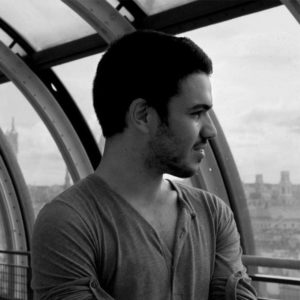
Miguel Matamoro
Miguel Matamoro studied composition with Gabriel Erkoreka, Ramón Lazkano, and Zuriñe F. Gerenabarrena at the Higher School of Music of the Basque Country, Musikene, and then his received his master’s degree from the Higher School of Music Katarina Gurska in Madrid.
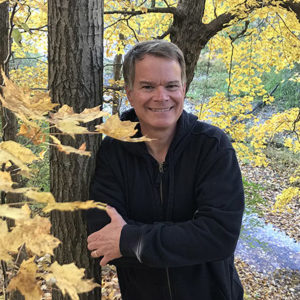
Eric Simonson
Eric Simonson's music has been heard in concerts across North America, including SEAMUS (Society of Electroacoustic Music in the United States), ICMC (International Computer Music Conference) and SCI (Society of Composers Incorporated) performances.
